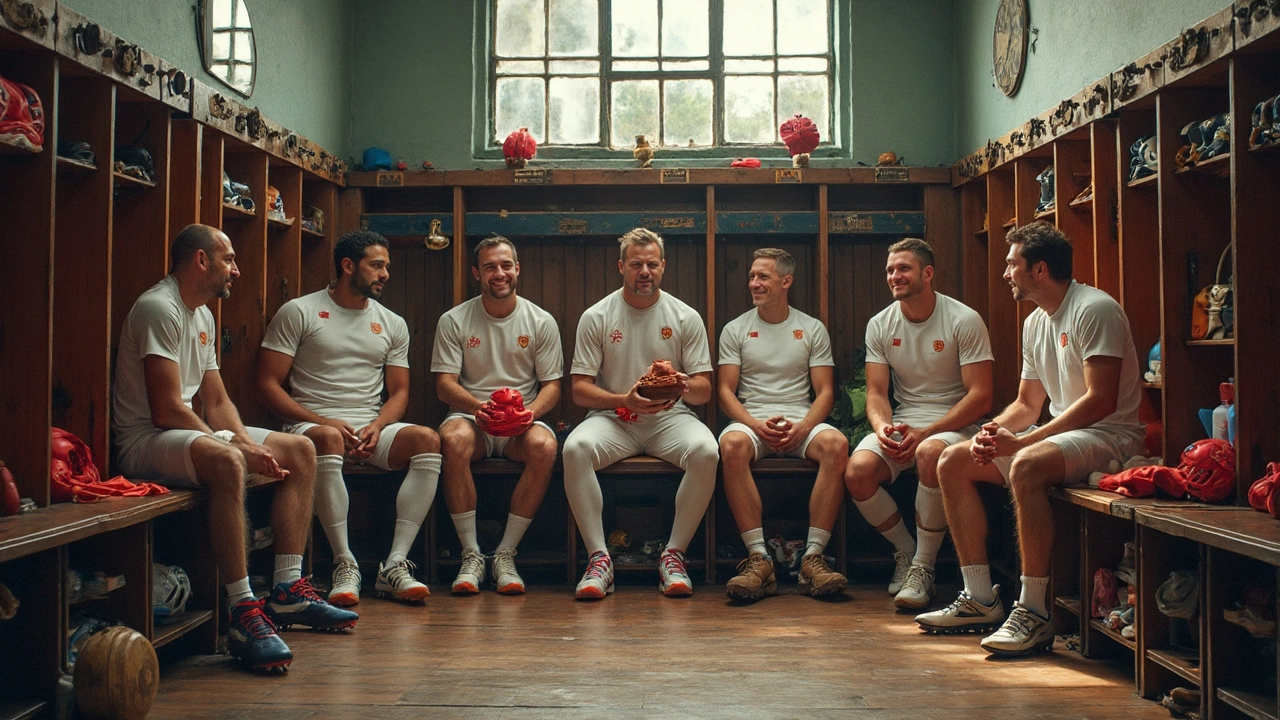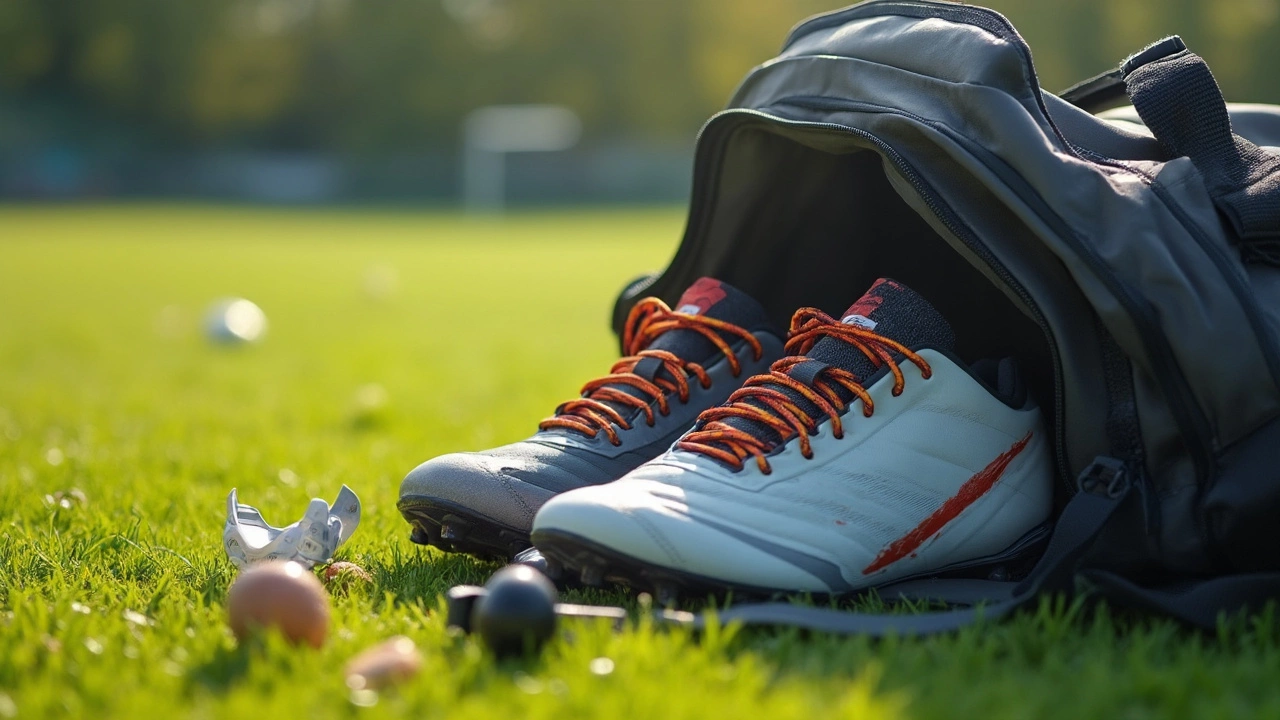How Is Equipment Used in Sport? Essential Gear in Action

If you’ve ever tried playing soccer without proper shoes or attempted to ride a bike without a helmet, you know how much equipment changes everything. The right gear isn’t just about looking like a pro—it’s your best friend when it comes to playing well and staying safe. Each piece has a purpose, whether it’s gripping the ball, keeping you from slipping, or protecting your head if you take a fall.
Take basketball shoes, for example. They aren’t just for style points—their design helps prevent ankle injuries and gives players the grip they need to pivot quickly on polished courts. Helmets in cycling or American football? Total lifesavers, literally. Even everyday items like water bottles count as equipment, helping you stay hydrated so you can focus on the game instead of the heat.
- Why Sports Equipment Matters
- Choosing the Right Gear for Your Game
- Caring for Your Equipment
- Fun Facts and Surprising Uses
Why Sports Equipment Matters
People might shrug off the idea of spending on extra gear, but here’s the truth—sports equipment is often the line between a great experience and a total disaster. When youth soccer leagues started requiring shin guards about 30 years ago, leg injuries dropped by nearly a third. Pads in hockey? They’ve made shattered teeth and broken bones way less common. Sports equipment isn’t some fancy add-on; it’s about playing hard without hurting yourself.
Performance gets a huge boost too. Runners used to wear basic canvas shoes in marathons. Now, lightweight trainers with special soles help shave minutes off finishing times by supporting the arch just right. In baseball, switching from wooden to aluminum bats makes hitting the ball easier and farther, especially for beginners. Whether you’re tossing a frisbee or competing for a medal, the right stuff lets you play your best.
There’s a mental part to this, too. Ever notice how putting on a uniform or lacing up brand-new shoes makes you stand a little taller? Gear acts as a mental switch, moving you into ‘game mode.’ Coaches even use this in team sports, handing out matching gear to build a strong team spirit. Feeling prepared goes a long way toward better focus and fewer nerves before a tough match.
- Sports equipment lowers the risk of both big and small injuries, which means you can play longer and with less worry.
- Quality gear can seriously improve your skills and confidence, even if you’re new to a sport.
- Some leagues and gyms won’t let you play without the right protective gear, so it’s a must-have if you want to join the fun.
So whether it’s Oliver the cat chasing toy balls or you shooting hoops at the gym, having the right equipment makes the entire experience safer, smarter, and way more fun.
Choosing the Right Gear for Your Game
Picking the right sports equipment can be the difference between having a blast or sitting out with a preventable injury. Each sport has its own must-have gear, but there are some simple checks and tips that work for pretty much anything you play.
The first step is knowing what you actually need. Sounds basic, right? But so many people grab gear that looks cool or is the priciest, thinking it’ll magically boost performance. The truth: Fit and comfort beat hype, no matter what sport you’re into.
- Sports equipment like helmets, pads, and mouthguards should always fit snug—not too loose or tight. If it shifts when you move, it won’t protect you when you take a hit.
- Try on shoes at the end of the day when your feet are slightly swollen. This helps you get a better fit since your feet expand with activity anyway.
- Always check for quality standards. Look for symbols like ASTM, NOCSAE, or CE on helmets and protective gear to make sure they meet safety guidelines.
- For young athletes, gear sized for growth is tempting, but too-big items can be as risky as ones that are too small. Pick equipment that fits now, not what they might grow into.
- Sport-specific gear matters. For example, a tennis racquet feels completely different from a badminton racquet, and using the wrong one can mess with both your game and your body.
Let’s check out some quick stats on gear safety and performance:
| Sport | Key Equipment | Injury Risk Drop (%)* |
|---|---|---|
| Football (helmet use) | Helmet, pads | Up to 60 |
| Cycling (helmet use) | Helmet | Up to 85 |
| Soccer (shinguards) | Shinguards, proper cleats | About 50 |
| Basketball (shoes) | Ankle-support shoes | About 40 |
*Based on research from organizations like the CDC and sports safety councils
Equipment tech is getting better every year—think moisture-wicking fabrics, shoes with sensors, or lighter, stronger helmets. But the basics haven't changed: the right fit, right safety marks, and right gear for your sport always win out. Don’t let flashy ads steer you away from what actually works for your body and your game style.

Caring for Your Equipment
Sports gear isn't cheap, and well-maintained equipment performs better and keeps you safer. The good news? Most gear lasts a lot longer if you just show it some regular care. For example, did you know that cleaning your soccer cleats right after every game can double their lifespan? The same goes for things like helmets and pads—sweat and dirt can actually break down the materials faster than you’d expect.
If you want your sports equipment to last, follow a few simple habits:
- Don’t let sweat sit: After use, wipe down helmets, pads, and gloves with a damp cloth. For shoes, let them air out instead of tossing them in your gym bag wet. This stops bacteria and bad smells from setting in.
- Store with care: Balls, rackets, and bats last longer if you keep them in cool, dry places, not in the trunk of your car or a damp garage.
- Check for wear: Give your gear a quick once-over before playing. Watch for cracked helmets, loose padding, worn-out laces, or broken fasteners. Replace anything past its prime to avoid injuries.
- Follow washing directions: If your gear is washable, always check the label first. Some pads and gloves can go in the washing machine, but most need hand-washing and air drying.
Here's a handy look at how long some common gear may last with regular care versus neglect:
| Equipment Type | Well-maintained (Average Lifespan) | Neglected (Average Lifespan) |
|---|---|---|
| Soccer Cleats | 1.5-2 years | 6-9 months |
| Football Helmet | 5 years | 2 years |
| Tennis Racket Strings | 6-12 months | 2-4 months |
If you have pets like my cat Oliver, keep your gear where curious paws can’t shred laces or chew padding. That tiny effort pays off when your stuff stays in great shape season after season.
Fun Facts and Surprising Uses
You might think sports equipment is all about tradition, but there’s a lot more going on than meets the eye. Let’s look at some wild and unexpected ways gear has shaped sports and even made players’ lives easier.
Did you know that the first football helmets were actually made from soft leather back in the early 1900s? They barely did anything for protection, but now, modern helmets come with shock-absorbing foam and sensors that can track head impacts. There are even smart mouthguards used in rugby and football today—they record stats like hits to the jaw so trainers can monitor players’ safety in real time (and yes, that helps cut down on sneaky concussions).
Here are some surprising facts about equipment across different sports:
- Tennis balls used at Wimbledon have changed color: They switched from white to yellow in 1986 because the yellow balls showed up better on TV, helping viewers follow the action.
- In baseball, the stitching style on the ball isn’t just for looks. The raised seams let pitchers throw tricky curveballs and sliders. Without them, pitching would be a lot less interesting.
- Some pro basketball players wear two pairs of socks—one on top of the other—to cut down on blisters and improve comfort. Not high-tech, but super effective!
- Soccer shin guards started out as cricket pads back in the 1870s. Now they’re shaped and padded to match different playing styles and positions.
- Olympic swimmers use swim caps not just to reduce drag but also to hold their goggles in place. Tiny detail, big impact on race performance.
Check out these fun stats about gear upgrades:
| Item | Innovation Year | Impact |
|---|---|---|
| Composite hockey sticks | 1999 | Made shots faster by 15-20% compared to wood |
| Ultra-light running shoes | 2017 | Helped shave up to 60 seconds off marathon times |
| Sensor-embedded football helmets | 2018 | Tracked 50,000+ impacts in one college season |
| High-visibility soccer balls | 2004 | Reduced missed calls on goals by 30% |
If you play for fun or compete seriously, try using gear in unexpected ways. For example, put extra grip tape on your baseball bat for batting practice, use resistance bands to make warm-ups count, or double up on sweatbands where you sweat most. The right tweaks and hacks can make your favorite sport more fun—and maybe even give you an edge next time you play.
